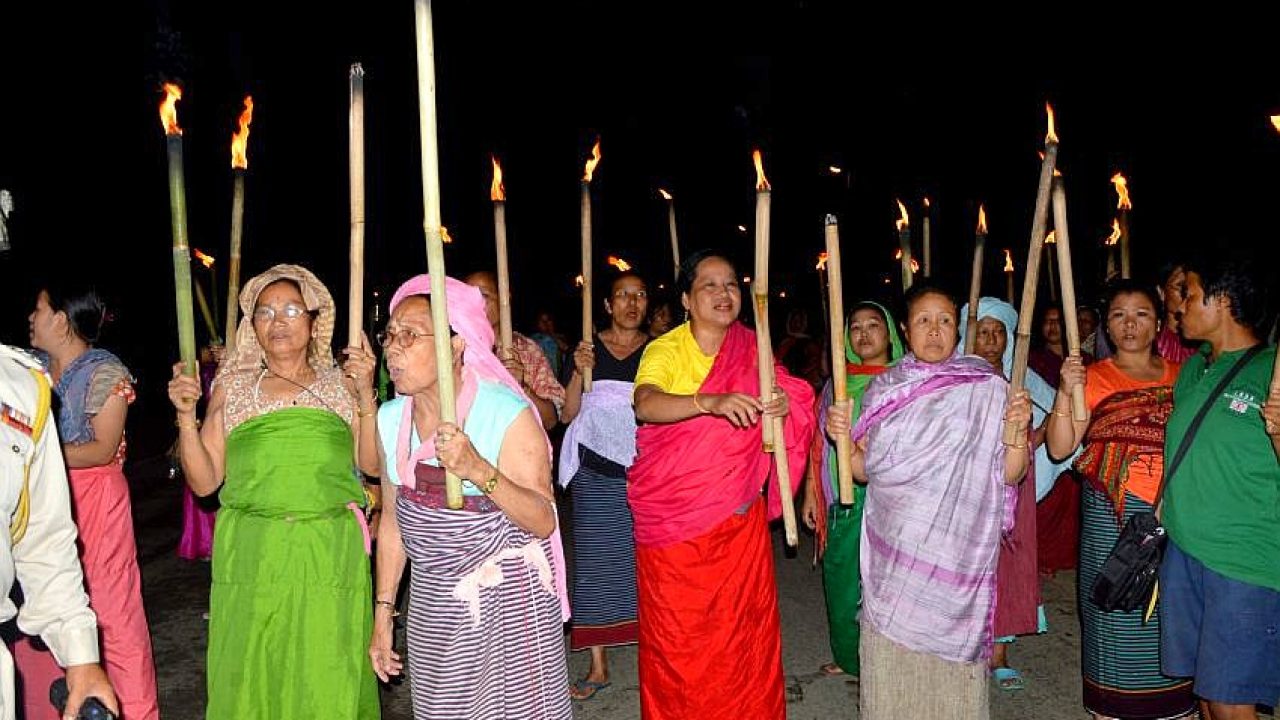For more than a century, women in the ethnically and culturally diverse state of Manipur have represented a strong moral force by leading battles against drug menace, human rights violations, corruption, the Armed Forces Special Powers Act (AFSPA) and the Citizenship Bill. Most recently, they have been making headlines as the scenic northeastern Indian state is besieged by violent ethnic strife and rioting. A group of women known as the Meira Paibis have been in the news since May this year, as they staged protests at Jantar Mantar and took to the violence-ridden streets of Manipur.
The state is engulfed in tensions resulting from clashes between the majority Meitei community and the state’s tribal groups, especially the Kukis.
The Meira Paibis, literally, the ‘women torch bearers’, are named thus because of the flaming torches they traditionally wielded as they performed nightly neighbourhood patrols to prevent drug abuse and alcoholism.
The conflict has erupted over the Meiteis asking the centre to accord Scheduled Tribe status to them. Minority tribal groups such as the Nagas and Kukis have expressed their censure over the demand stating the absence of any historical socio-economic handicaps suffered by the majority community. As per the Cheitharol Kumbaba, a royal chronicle of Manipur, the origin of the Meitei kingdom can be traced to 33 AD. Many kings of the kingdom of Manipur, including Raja Bodhachandra- the ruler at the time of India’s independence in 1947, belonged to the Meitei community. By this logic, the Meiteis have been a dominant majority, both demographically and politically.

In the ongoing conflict, the contentious role of the Meira Paibis has enjoyed some spotlight. The Meira Paibis, literally, the ‘women torch bearers’, are named thus because of the flaming torches they traditionally wielded as they performed nightly neighbourhood patrols to prevent drug abuse and alcoholism.
In 1949, Raja Bodhchandra agreed to the merger of Manipur with the Union of India. In 1956, Manipur became a Union Territory and attained full-fledged statehood in 1971. The decision to merge invited public outcry with many youths taking up arms in protest against what was viewed as a threat to the region’s unique culture and ethnic identities. The unrest was exacerbated by the state’s intensifying drug menace. Manipur shares its border with Myanmar, historically an important link in the heroin trade.
The Meira Paibis belong to the majority Meitei community. Although the Meira Paibis were formed in 1977, the history of women’s grassroots activism in Manipur can be traced back to the pre-independence era. Manipur, one of India’s beautiful north-eastern states, preserves a vibrant tradition of mythology and fascinating ancient rituals. In 1947, the erstwhile princely state got its independence from British rule and came to be governed by the Manipur State Constitution Act, 1947.
In 1949, Raja Bodhchandra agreed to the merger of Manipur with the Union of India. In 1956, Manipur became a Union Territory and attained full-fledged statehood in 1971. The decision to merge invited public outcry with many youths taking up arms in protest against what was viewed as a threat to the region’s unique culture and ethnic identities. The unrest was exacerbated by the state’s intensifying drug menace. Manipur shares its border with Myanmar, historically an important link in the heroin trade.
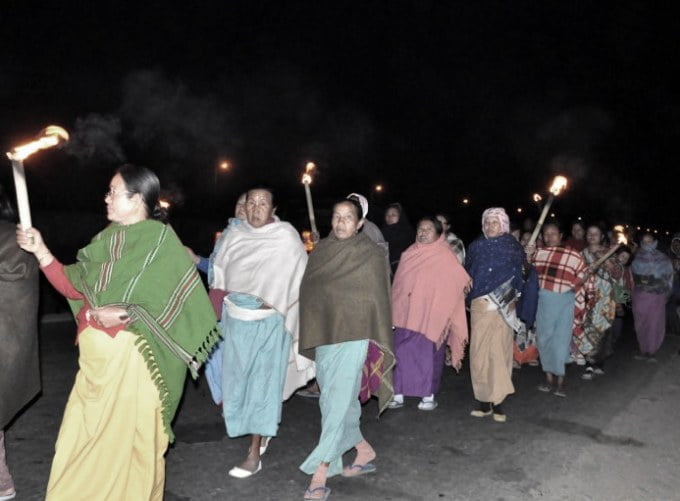
Both the Indian states of Manipur and Mizoram have been conduits of drug trade from Myanmar and beyond in eastern and southeastern Asia- the infamous Golden Triangle. Psychotropic substance abuse with opium, cannabis, alcohol and a variety of medical drugs such as Buprenorphine, and sedatives such as Benzodiazepines have been crossing over the border into Manipur for several decades and circulating to youths of Manipur. Young people have been caught in the crossfire between insurgents and the Army for years, exacerbating the law-and-order situation in the state and fanning insecurities surrounding the loss of identity and historical legacy amongst the Meiteis.
While the Meira Paibis are a prominent cornerstone of women’s movements in north-eastern India, the history of women’s movements in the region goes back to 1904, when women in Manipur staged one of the first women-led protests- the first ‘Nupi Lan’. The term ‘Nupi Lan’ signifies women’s war and rightly so, for it owes its origin to the events of December 12, 1904, when thousands of women in Manipur valiantly stood up for the rights of their community.
The women of Manipur stepped up in the 1970s to form the movement which is now known as the movement of the Meira Paibis. They took up the gauntlet against alcoholism and drug abuse which still threatens to undermine the socio-economic order of the state. The emergence of economic and social problems prompted and propelled the emergence of rebel and separatist groups. For over sixty years, insurgencies have riddled the state and disrupted daily life. Far from passive victims of disorder and violence, women in Manipur have displayed a picture of agency and played a role in everyday informal peacebuilding. The women groups patrolled the streets after dark and any men found to be drinking were punished. They also raided and picketed liquor shops, forcing the closure of many.
While the Meira Paibis are a prominent cornerstone of women’s movements in north-eastern India, the history of women’s movements in the region goes back to 1904, when women in Manipur staged one of the first women-led protests- the first ‘Nupi Lan’. The term ‘Nupi Lan’ signifies women’s war and rightly so, for it owes its origin to the events of December 12, 1904, when thousands of women in Manipur valiantly stood up for the rights of their community.
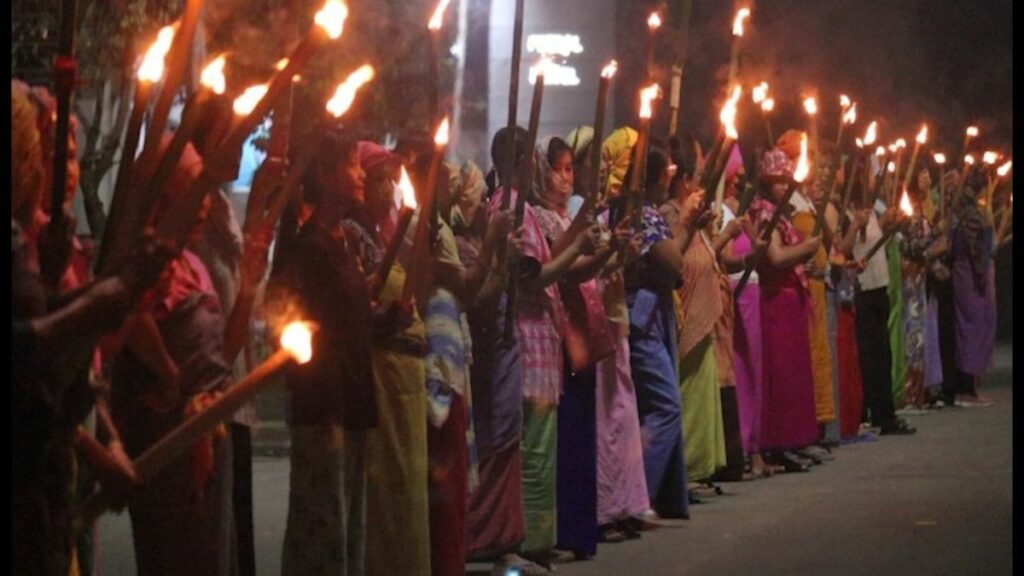
After the Anglo-Manipur War of 1891, Manipur came under the direct rule of the British. The administration was finally handed over to 22-year-old Raja Churachand Singh and his durbar in 1907. Needless to say, the Raja was a rubberstamp while the British political agent stationed in his court enjoyed sweeping powers and called the shots, especially regarding the administration of the hills. This arrangement seriously impacted the economy and trade in the region.
The first Nupi Lan agitation was triggered by the reintroduction of the unpopular lallup system in July 1904. The system, wherein all males between the ages of 17 and 60 years had to perform compulsory labour for ten in every forty days, was introduced in the twelfth century during the reign of Meidingu Loyumba, then king of Manipur. The system was abolished by the British in 1892, only to be reintroduced in 1904 following an order which required one man from each family of Manipur, particularly from the Imphal area, to go to the Kabo valley to fetch timber for rebuilding the recently fire-ravaged residence of the assistant political agent.
On October 5, 1904, around 5,000 women gathered at Khwairamband Bazar (Imphal) in protest, refusing to move till the order was retracted. The women continued to protest the colonial state’s injustices. In 1925, they raised their voice against the proposed hike in water tax.
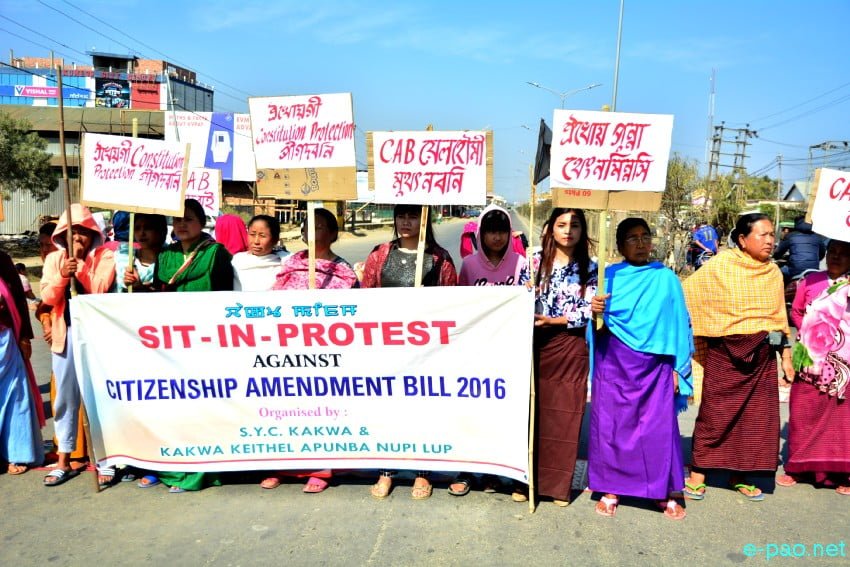
The second Nupi Lan was precipitated in 1939. A rice surplus region, Manipur exported grain to other parts of the subcontinent. However, under British control, grain exports increased exponentially during the late nineteenth and early twentieth centuries while the area under cultivation increased only marginally. Between 1925 and 1938, there was an increase of only 10,322 acres of total area under cultivation while the volume of exported rice jumped from 1,55,014 mounds to 3,72,174 mounds.
The widespread phenomenon of deindustrialisation and the ruin of indigenous handicrafts and cottage industries that plagued India as a colony was not an alien feature in Manipur either. As disaffection against the colonial overlords grew, the stage was set for another Nupi Lan campaign.
In November 1939, torrential rains and hail severely damaged the paddy crop. Farmers appealed to the royal court to ban export to meet local demand. The British political agent defeated any attempt by the court to intervene on behalf of the people and acute food shortages drove prices up till the common people of Manipur could not afford to buy rice.
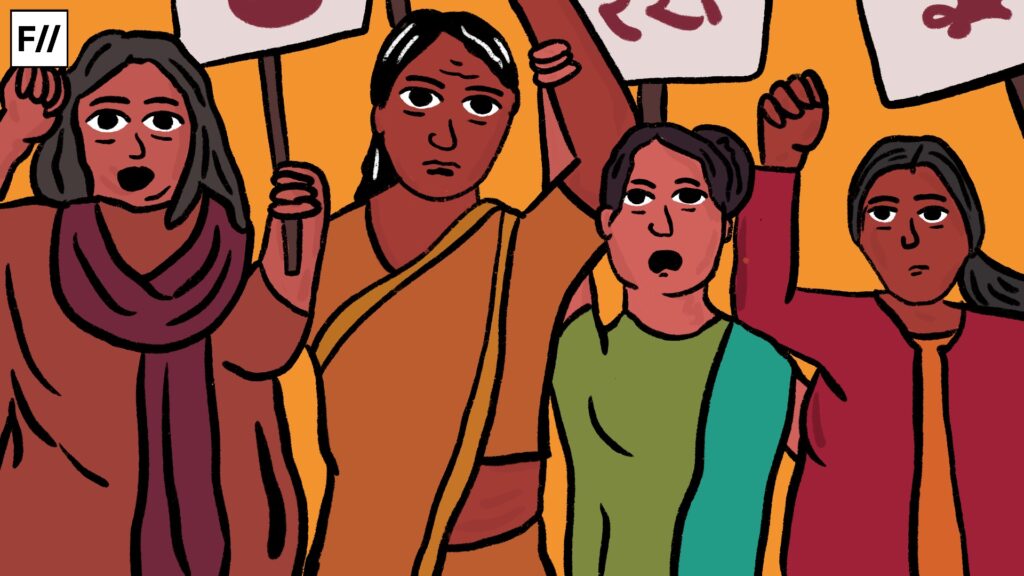
On December 12th that year, hundreds of women came out on the streets of Imphal demanding a ban on rice export and the closure of rice mills. As the number of women protesters swelled to around 4000 and the agitation continued, the Assam Rifles were brought in to disperse the crowds. Matters soon spiralled out of control and the soldiers mounted a bloody bayonet charge on the women. The violence occurred in Imphal’s Khwairamband Bazar, a market run exclusively by women vendors. The Bazar suspended any commerce for a year as a protest against the economic policies of the Maharaja and the Marwari monopolists controlling the rice trade in the region.
In the 1970s it became known as the movement of the Meira Paibis against drug abuse and alcoholism. Over the years, the agitation of the Manipuri women has evolved into a movement for constitutional and administrative reform in Manipur. In response to rampant insurgencies and rebellion in Manipur, the Indian government imposed the Armed Forces Special Powers Act (AFSPA) on September 11, 1958.
In the 1970s it became known as the movement of the Meira Paibis against drug abuse and alcoholism. Over the years, the agitation of the Manipuri women has evolved into a movement for constitutional and administrative reform in Manipur. In response to rampant insurgencies and rebellion in Manipur, the Indian government imposed the Armed Forces Special Powers Act (AFSPA) on September 11, 1958. The Act bestows upon the armed forces, the powers to maintain “public order” in “disturbed areas”. The Act has been condemned as oppressive, discriminatory, and unconstitutional from both within and without the country.
The image of 12 Imas or mothers who registered their protest against the AFSPA by standing nude in front of Manipur’s Kangla Fort in July of 2004, is etched in the national imagination as an unforgettable example of women-led civil rights movements in India, and their bold challenge to arbitrary state power. The fierce protest against the brutal rape and murder of 32-year-old Thangjam Manorama by the 17th Assam Rifles for her alleged links to Maoist insurgents compelled the government to lift the AFSPA from seven assembly segments in Imphal on August 12th, 2004.
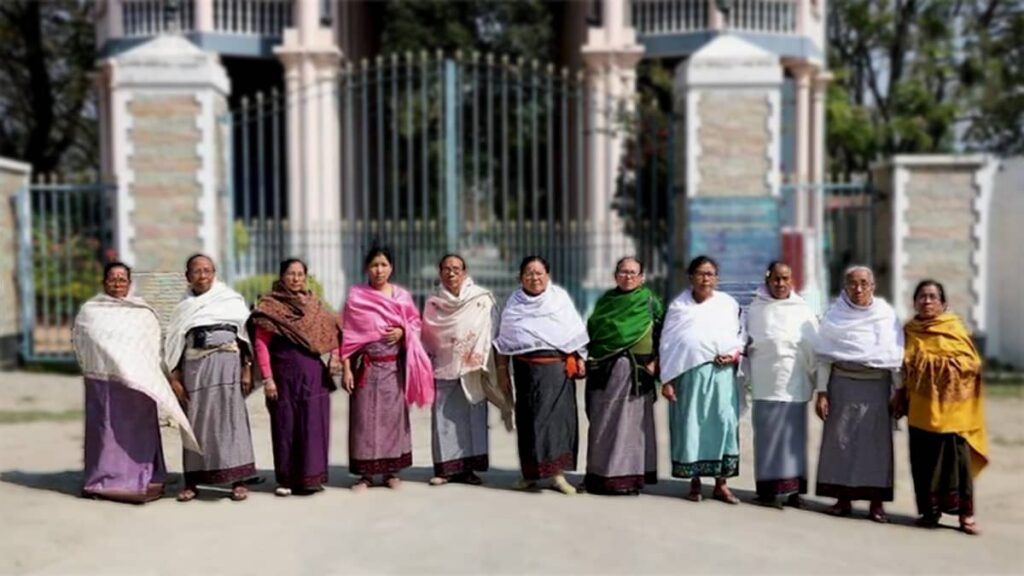
The Assam Rifles were forced to vacate the Fort. For over a decade, the group provided enduring support to prominent activist Iron Sharmila who started a 16-year-long hunger strike in 2000, against the AFSPA as a vehicle of state-sponsored killing and torture. On January 19, 2019, the women vendors of the Keithel Khwairamband Bazar once again staged a sit-in to protest against the Citizenship Amendment Bill.
While the movement of the Meira Paibis is one of its kind in India, and ought to be celebrated for its moxie and bold resilience in the face of powerful opponents, there is the need to think about how women’s movements interact across ethnicities and other forms of social division. Simply glorifying all instances of women’s activism is a myopic view of grassroots activism. Such movements need to be analysed for the agency implicit in them as well as evaluated in the context of the outcomes they engender.
Can the simple fact of agency of women’s group be celebrated divorced from the context, the ends and questions of autonomy? For instance, if women’s resistance does not contribute to long-lasting peace-building and inclusive justice, can it still be celebrated as agency? What happens when we measure Meira Paibis against the idea of peace- the kind of peace which helps rebuild community in areas plagued by violent ethnic divisions?
In the most recent fiasco in Manipur, the Meira Paibis have been unable to distinguish themselves from the chaos as a purely peacebuilding and peacekeeping moral force. While the facts remain mired in intrigue and debate, there is only one thing that can be said with certainty- the collective agency and social mobilisation by the Meira Paibis through Manipur’s long night of socio-political and humanitarian crises are remarkable indeed.
As women peacebuilders and activists campaigning for justice, it is important that their own actions be strongly rooted in an ethical code of conduct which derives from the ethos of justice and peace not only for communities to which they belong but for the wider society and population in the state. In the most recent fiasco in Manipur, the Meira Paibis have been unable to distinguish themselves from the chaos as a purely peacebuilding and peacekeeping moral force. While the facts remain mired in intrigue and debate, there is only one thing that can be said with certainty- the collective agency and social mobilisation by the Meira Paibis through Manipur’s long night of socio-political and humanitarian crises are remarkable indeed.
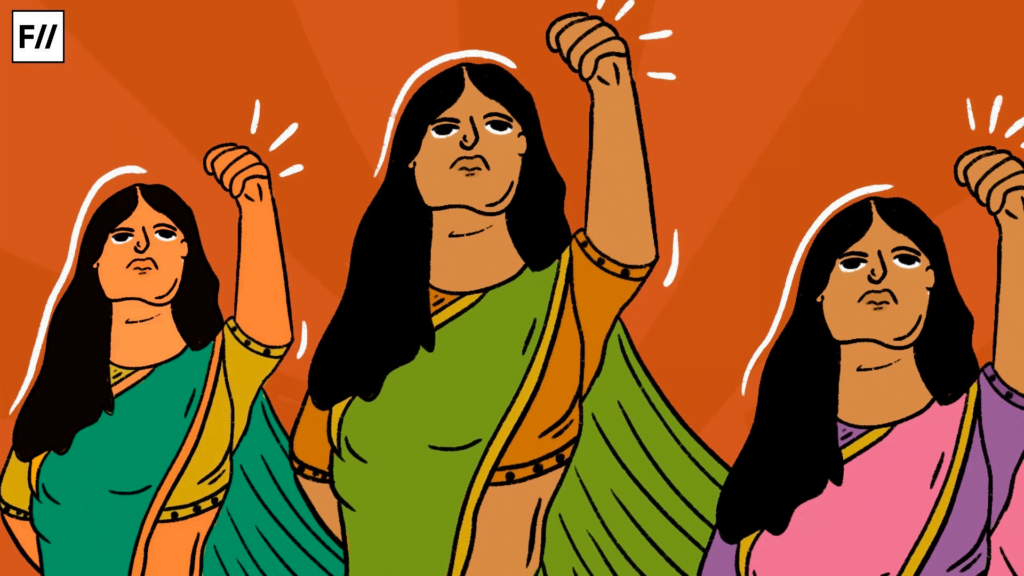
However, women-led civil rights movements can benefit from the element of reflexivity so that potent movements that have acted as conscience keepers and watchdogs of justice, do not lose their legitimacy. One of the main achievements of the Meira Paibis has been their success in blocking human rights violations by state actors. They have influenced public opinion in their favour and rightly so. However, even this robust movement has failed to transcend the barrier of the ethnic divide or translate into an interethnic mass peacebuilding programme.
Traditionally lauded for its non-violent protest methods, the Meira Paibis is believed to have blocked the Army from checking Meitei violence against the Kukis in this most recent conflict. It is important that even historically significant feminist movements such as the Meira Paibis pause and evaluate their own mobilisation and agenda, lest they lose their credibility and be reduced to a self-seeking peripheral movement.
Traditionally lauded for its non-violent protest methods, the Meira Paibis is believed to have blocked the Army from checking Meitei violence against the Kukis in this most recent conflict. It is important that even historically significant feminist movements such as the Meira Paibis pause and evaluate their own mobilisation and agenda, lest they lose their credibility and be reduced to a self-seeking peripheral movement.
It is also to be remembered that while the stories of Meira Paibis are privileged and more visible in media and scholarship, women belonging to the Kuki and Naga groups also have their stories of agency and suffering. To remain truly relevant as builders and custodians of inclusive peace and justice, the Meria Paibis must recognise the intersectionality of both politics and feminism.
